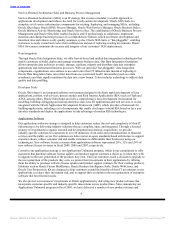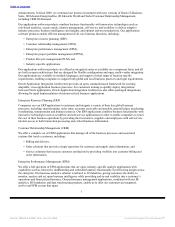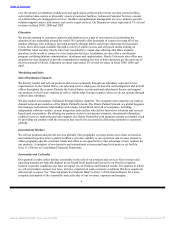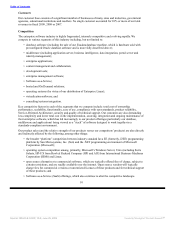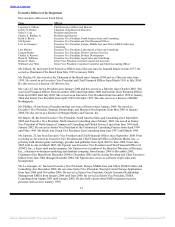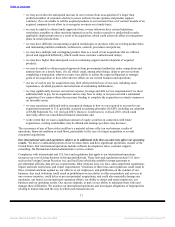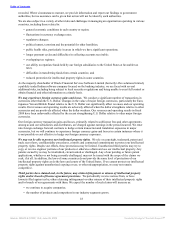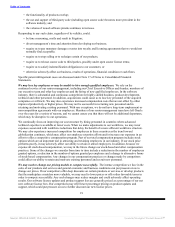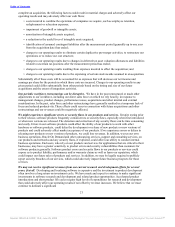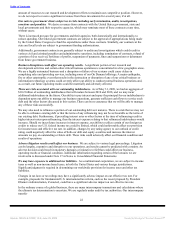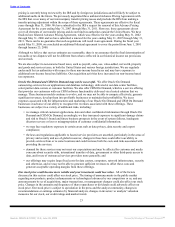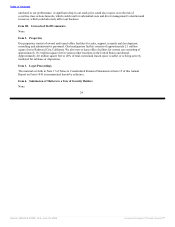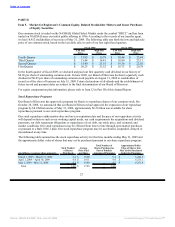Oracle 2008 Annual Report Download - page 21
Download and view the complete annual report
Please find page 21 of the 2008 Oracle annual report below. You can navigate through the pages in the report by either clicking on the pages listed below, or by using the keyword search tool below to find specific information within the annual report.
Table of Contents
number of these transactions could cause our quarterly new software license revenues to fall significantly
short of our predictions.
Our success depends upon our ability to develop new products and services, integrate acquired products
and services and enhance our existing products and services. Rapid technological advances and evolving
standards in computer hardware, software development and communications infrastructure, changing and
increasingly sophisticated customer needs and frequent new product introductions and enhancements
characterize the enterprise software market in which we compete. If we are unable to develop new products
and services, or to enhance and improve our products and support services in a timely manner or to position
and/or price our products and services to meet market demand, customers may not buy new software licenses
or purchase or renew software license updates and product support contracts. Renewals of these support
contracts are an important factor in the growing software license update and product support segment of our
business. In addition, IT standards from both consortia and formal standards-setting forums as well as de facto
marketplace standards are rapidly evolving. We cannot provide any assurance that the standards on which we
choose to develop new products will allow us to compete effectively for business opportunities in emerging
areas.
We are currently building Oracle Fusion Applications, which are being designed to unify best-of-business
capabilities from all Oracle applications in a complete suite. We have also announced that we intend to extend
the life of many of our acquired products and will continue to provide long-term support for many of our
acquired products, both of which require us to dedicate resources. If we do not develop and release these new
or enhanced products and services within the anticipated time frames, if there is a delay in market acceptance
of a new, enhanced or acquired product line or service, if we do not timely optimize complementary product
lines and services or if we fail to adequately integrate, support or enhance acquired product lines or services,
our business may be adversely affected.
Acquisitions present many risks, and we may not realize the financial and strategic goals that were
contemplated at the time of a transaction. In recent years, we have invested billions of dollars to acquire a
number of companies, products, services and technologies. An active acquisition program is an important
element of our overall corporate strategy, and we expect to continue to make similar acquisitions in the future,
including our currently pending acquisition of Sun Microsystems, Inc. Risks we may face in connection with
our acquisition program include:
• our ongoing business may be disrupted and our management’s attention may be diverted by
acquisition, transition or integration activities;
• an acquisition may not further our business strategy as we expected, we may pay more than the
acquired company or assets are ultimately worth or we may not integrate an acquired company or
technology as successfully as we expected, which could adversely affect our business or operating
results;
• we may have difficulties (i) managing an acquired company’s technologies or lines of business or
(ii) entering new markets, in each case where we have no or limited direct prior experience or where
competitors may have stronger market positions;
• our operating results or financial condition may be adversely impacted by liabilities that we assume
from an acquired company or technology or by other circumstances related to an acquisition, including
claims related to an acquired business or technology from government agencies, terminated employees,
customers, former stockholders or other third parties; pre-existing contractual relationships of an
acquired company that we would not have otherwise entered into, the termination or modification of
which may be costly or disruptive to our business; unfavorable revenue recognition or other accounting
treatment as a result of an acquired company’s practices; and intellectual property disputes;
• we may fail to identify or assess the magnitude of certain liabilities, shortcomings or other
circumstances prior to acquiring a company or technology, which could result in unexpected litigation
or regulatory exposure, unfavorable accounting treatment, unexpected increases in taxes due, a loss of
anticipated tax benefits or other adverse effects on our business, operating results or financial
condition;
16
Source: ORACLE CORP, 10-K, June 29, 2009 Powered by Morningstar® Document Research℠


